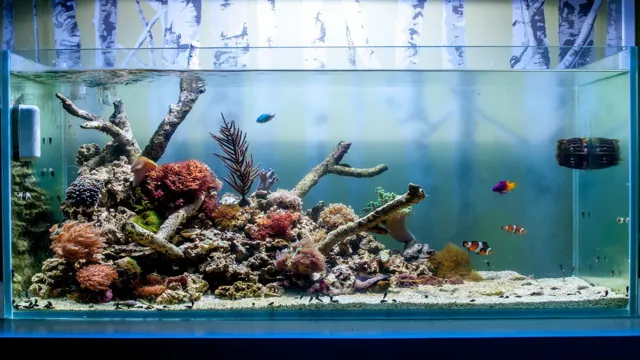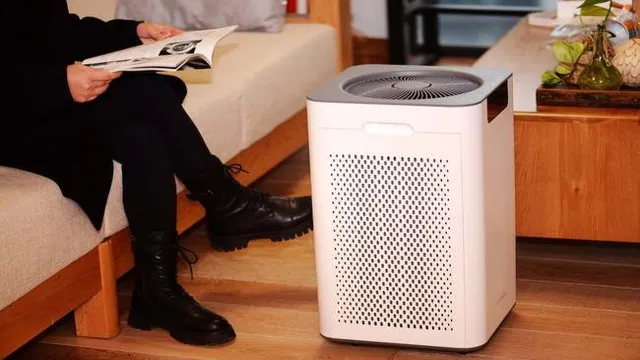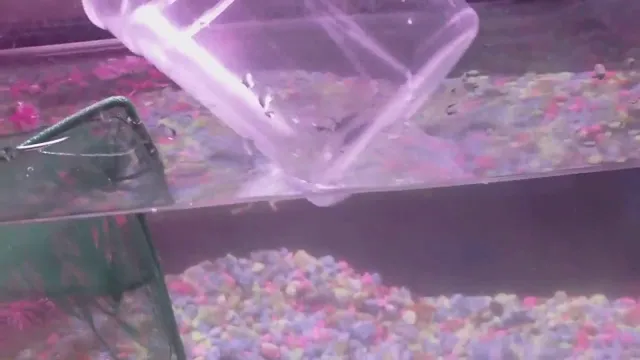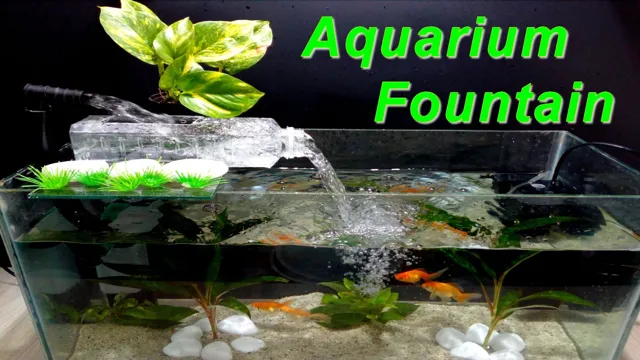Do you have an aquarium and need to transfer water or clean debris from the bottom? A siphon pump is an essential tool for any aquarium owner. But, buying one can be costly and, if you’re on a budget, making one at home can be a better option. In this blog post, we will show you how to make an affordable siphon pump for your aquarium using everyday items found in most households.
Not only will this save you money, but it’s also an excellent way to get creative and DIY. Get ready to learn how to make a functional siphon pump that is perfect for your aquarium needs in just a few simple steps.
What You’ll Need
If you’re an aquarium owner, then you’ll know the importance of maintaining a clean and healthy environment for your fish and plants. One of the easiest ways to do this is by using a siphon pump to clean the tank regularly. And the good news is that you can easily make one at home with just a few materials.
To make a siphon pump for your aquarium, you’ll need a clear plastic hose, a funnel, a utility knife, and a water container. Start by cutting the clear plastic hose to the desired length and then attach it to the funnel. Next, fill the hose with water until it reaches the top of the funnel and then place the other end of the hose into the water container.
Finally, hold the funnel above the water container and let the water flow down the hose into the container. And just like that, you’ve created a simple yet effective siphon pump for your aquarium!
Hose
When it comes to working with hoses, there are a few items that you’ll need to ensure you have a successful project. Firstly, you’ll need the correct type of hose for the job at hand. Different hoses are designed for different applications, so it’s important to select the right one.
For example, a garden hose is not suitable for use with chemicals or fuels. You’ll also need some fittings and clamps to connect the hose to other components of your system. It’s essential that these are the correct size and type, so make sure to check with your supplier if you’re unsure.
Additionally, having a hose cutter on hand can be helpful for cutting the hose to the correct length. Lastly, safety is of utmost importance, so make sure to wear appropriate eye protection and gloves when working with hoses. By having all of these items ready, you can ensure a hassle-free and successful project.
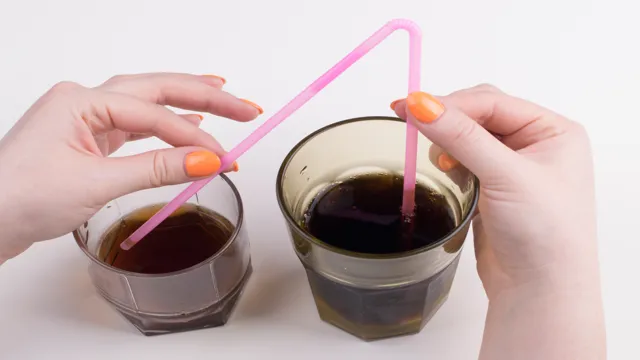
Air Pump
When it comes to keeping your tires properly inflated, an air pump is a necessary tool to have on hand. But what exactly do you need to make sure you can inflate your tires whenever you need to? First, you’ll need the air pump itself, which can come in different forms such as a basic handheld pump or a more advanced electric pump. You’ll also need a tire pressure gauge to measure the amount of air in your tires, ensuring you don’t over-inflate.
It’s a good idea to have spare valve caps to replace any that may become damaged or lost during the inflation process. And lastly, having a tire repair kit on hand can be helpful in case of any unexpected punctures or leaks. By having all these tools ready, inflating your tires can be a quick and easy task.
Remember, properly inflated tires not only improve your car’s performance but also help promote overall safety on the road.
Valve
Valve If you’re planning on using Valve to purchase and play games on your computer, there are a few things you’ll need to get started. Firstly, you’ll need to make sure that your computer meets the minimum system requirements for the game you want to play – this information is usually readily available on the game’s Steam page. You’ll also need a Steam account, which you can easily create on the Steam website.
Once your account is set up, you can download the Steam client to your computer, which will serve as your portal to the Steam store, your games library, and the Steam community. A reliable internet connection is also a must, as all game downloads and updates are handled through Steam. Finally, if you plan on playing any multiplayer games, you may want to invest in a good quality headset or microphone so you can communicate with your teammates effectively.
With all these things in place, you’ll be able to start exploring the vast world of games available on Valve and enjoy hours of fun and entertainment.
Bucket
When it comes to bucket gardening, there are a few things you’ll need to get started. Of course, the most important item is a bucket! Ideally, you’ll want a five-gallon bucket made of food-grade plastic to ensure it’s safe for growing fruits, vegetables, and herbs. You’ll also need to drill some drainage holes in the bottom of the bucket to prevent waterlogging your plants.
A good potting mix is essential for ensuring your plants have a healthy environment to grow in and will need to be added to the bucket. Additionally, consider adding some fertilizer, either slow-release granules or a liquid option, to provide nutrients for your plants throughout the growing season. A watering can or hose will also be necessary to keep your plants hydrated. (See Also: How to Dose Aquarium Salt to Treat Ich: A Complete Guide to Proper Treatment)
Finally, your desired plants or seeds are the icing on the cake for creating a beautiful and productive bucket garden. With these items on hand, you’ll be well on your way to enjoying the benefits of bucket gardening.
Step-by-Step Guide
Making a siphon pump for your aquarium is a practical and cost-effective solution for cleaning and maintaining the health of your aquatic pets. To make your own siphon pump, you will need a few materials such as PVC pipes, a rubber suction cup, and a flexible tube. Start by creating a suction pump by attaching the suction cup to one end of the PVC pipe, while the flexible tube should be inserted into the other end.
Once you have secured the flexible tube, insert the PVC pipe into the aquarium and make sure the suction cup is firmly attached to the glass. Pump or suck on the end of the flexible tube until water starts flowing out of the aquarium. At this point, all that’s left to do is point the other end of the tube into a container or sink and let the water run out.
Making a siphon pump is an easy and DIY solution for aquarium cleaning that prevents spills and overflows while ensuring your fish stay healthy and happy.
Step 1: Connect hose to air pump and valve
When setting up an air pump, the first step is to connect the hose to both the pump and the valve. This may seem like a simple task, but it’s important to make sure you have the right size hose and that it’s securely attached to both ends. A loose connection can lead to air leaks and reduced efficiency.
It’s also important to double-check that the valve is tightly closed before opening the air pump. Once everything is connected and secure, you can move on to the next step in setting up your air pump. Remember to take your time and be cautious, as a mistake in this first step can cause issues down the line.
By following this guide, you can ensure a successful setup for your air pump.
Step 2: Insert one end of the hose into the aquarium
When setting up a new aquarium, it is important to follow the proper steps to ensure the health and well-being of your fish. Step 2 of our step-by-step guide involves inserting one end of the hose into the aquarium. This might seem like a straightforward task, but there are a few things to keep in mind.
Make sure the hose is clean and free of any debris or contaminants before inserting it into the tank. Also, be gentle when placing the hose to avoid disturbing any substrate or decorations in the tank. Once the hose is in place, you can connect the other end to a bucket or sink and begin filling the tank with water.
It’s important to monitor the temperature and pH levels regularly during this process to ensure they are at optimal levels for your fish. By following these steps, you can help create a safe and healthy environment for your aquatic pets.
Step 3: Place the other end of the hose in the bucket
Placing the other end of the hose in the bucket is the final step to completing your DIY siphoning project. It’s important to make sure that the bucket is secure and placed in a position lower than the starting point of the hose to ensure the flow of liquid. You can use a brick or a weight to keep the bucket in place and prevent it from tipping over.
You may need to adjust the angle of the hose to prevent kinking or twisting, which can stop the siphoning process. Once everything is securely in place, you can begin the siphoning process by submerging the hose in the liquid and let gravity do the rest. With a little patience, you’ll have successfully transferred the liquid to the bucket.
It’s always rewarding to complete a DIY project on your own, and siphoning liquids is no exception. Whether you’re siphoning water for your garden or taking aquaponics to the next level, this simple process is a cost-effective and straightforward solution. Don’t hesitate to give it a try!
Step 4: Prime the pump by filling the hose with water
After connecting the hoses to your water pump, it’s important to prime the pump to ensure proper water flow. To do this, first, turn off the pump and make sure the hose is not kinked or obstructed. Then, remove the plug from the end of the hose and place it in the water source.
Turn on the pump for a short time, allowing the hose to fill with water. Once water is flowing steadily from the hose, turn off the pump and reattach the hose to the pump. This process ensures that any air or debris trapped in the hose is forced out and replaced with water, allowing for optimal pump performance. (See Also: How to Make Wood Aquarium Tree: A Step-by-Step Guide for Aquarists.)
Remember to always prime your pump before use to prevent any damage to the equipment and ensure a steady water flow.
Step 5: Turn on the air pump and regulate the flow with the valve
Now it’s time to turn on the air pump and get things going! First, make sure that all connections and hoses are securely fastened and free of leaks. Then, slowly open the valve to allow air to flow into the tank. It’s important to regulate the flow with the valve so that you don’t overwhelm the tank with too much air.
As the air pump is running, keep an eye on the pressure gauge to make sure that everything is working properly. If the pressure gets too high, you may need to adjust the valve or turn off the air pump briefly to let some air out of the tank. Remember, keeping proper air flow in your aquarium is critical for the health and well-being of your fish, plants, and other aquatic creatures.
Step 6: Drain the water from the aquarium into the bucket
Draining the water from your aquarium might seem like a daunting task, but it’s actually pretty straightforward. After you’ve unplugged all the equipment and removed any decorations or plants, you’re ready to start. First, grab a clean bucket and place it near the aquarium.
Then, carefully begin siphoning the water into the bucket using a gravel vacuum. This process will remove any debris that may have accumulated on the gravel or decorations. Once the water level in the aquarium is low enough that you can reach it with a covered cup or bowl, start transferring the water to the bucket.
Be careful not to disturb the remaining fish or plants. As the water level decreases, you’ll have to use a smaller container to scoop up the remaining water until it’s low enough for you to manually remove the remaining water with a cup or sponge. Finally, dispose of the old water and debris appropriately.
Don’t forget to clean the aquarium and equipment before refilling it with clean water. So, grab your bucket, and let’s get started!
Benefits of Using a Siphon Pump in Your Aquarium
If you have an aquarium, using a siphon pump can make maintenance a breeze. Not only does it help make water changes more straightforward, but it also allows for thorough cleaning of substrate and disposal of waste. But have you ever considered making your own siphon pump? Using a few household items like PVC tubing, a plastic bottle, and a faucet, you can DIY a functional siphon pump for your aquarium.
Not only will it save you money in the long run, but you’ll also have the satisfaction of making something yourself. So, how to make a siphon pump for aquarium? Look up a tutorial online or follow these steps: cut the PVC tubing to size, insert it into the bottle, create a vacuum by covering the end of the tubing with your finger and running water through the faucet until it fills the PVC tubing, and submerge the open end of the tubing into the aquarium water. It’s that simple! Using a siphon pump can make caring for your aquarium much more efficient and enjoyable, so give it a try.
Easy Maintenance
If you’re looking for an easy and efficient way to maintain your aquarium, using a siphon pump is the way to go. With this simple and handy tool, you can quickly and easily remove debris and waste from your tank, helping to keep your aquatic pets healthy and happy. One of the biggest benefits of using a siphon pump is that it allows you to clean your aquarium without having to empty the entire tank.
As you pump the water through the siphon, the debris and waste are pulled out of the tank and into a container, leaving behind the clean water and a healthier environment for your fish. Another great advantage of using a siphon pump is that it is very easy to use and doesn’t require any special skills or knowledge. Simply attach the pump to your tank and start pumping away! Plus, because siphon pumps are so affordable, they are a great way to save money compared to more complex filtration systems.
So if you’re looking for an effective and economical way to keep your aquarium in tip-top shape, a siphon pump is the way to go!
Cost Effective
Using a siphon pump in your aquarium can be a cost-effective way to maintain a clean and healthy environment for your fish and plants. One of the key benefits of using a siphon pump is that it helps to remove debris and waste from the substrate without the need for a full water change. This means that you can conserve water and save money on your water bill.
In addition, a siphon pump can also help to prevent the buildup of harmful toxins in your aquarium, which can lead to algae growth, muddled water, and sick fish. By removing excess waste, you’re creating a more balanced and natural ecosystem for your aquatic pets. So, whether you’re a seasoned aquarist or just starting out, consider investing in a siphon pump to keep your aquarium healthy and thriving. (See Also: How to Keep Aquarium Gravel Smooth: Simple Tips to Ensure a Clean Tank)
Efficient Water Changes
One of the most tedious and yet necessary tasks in maintaining an aquarium is changing the water. Many aquarium owners opt to use a siphon pump to make the process more efficient. This handy tool allows you to easily and quickly remove water and debris from the aquarium without disturbing your aquatic pets.
But the benefits don’t stop there. Using a siphon pump also helps to reduce the amount of time and effort required for water changes, making the process less daunting. Additionally, it enables a more thorough cleaning of the tank, improving water quality and ensuring your fish are living in a healthy environment.
By incorporating a siphon pump into your aquatic routine, you can enjoy a cleaner and more vibrant aquarium in just a fraction of the time. So, why not give it a try and see the difference it can make for your aquatic friends?
Conclusion
In conclusion, with just a few simple materials and a bit of know-how, you can create your very own siphon pump for your aquarium. And believe me, it’s worth it! Not only are you saving money by not having to buy a commercial pump, but you’ll also feel like a DIY superhero. Plus, you never know when you’ll need to siphon some water out of your tank in a pinch.
So grab some tubing, create a vacuum, and let gravity do the rest. You’ll be a siphon pro in no time!”
FAQs
What is a siphon pump, and why do I need one for my aquarium?
A siphon pump is a simple tool used to transfer water between containers without the need for electricity or manual pumping. It’s a commonly used tool for aquarium maintenance, such as water changes, cleaning substrate, and removing waste. Its design allows you to start the siphon and let gravity do the rest, making it an easy and efficient way to move water in and out of your aquarium.
Can I make a siphon pump for my aquarium at home?
Yes, you can easily make a siphon pump for your aquarium at home by using basic materials such as PVC tubing, an aquarium gravel vacuum head, and a few other necessary items. Simply assemble the materials, and you’ll have your own DIY siphon pump in no time.
How long should my siphon pump hose be for my aquarium?
The length of your siphon pump hose depends on the depth of your aquarium. Ideally, you should choose a hose that’s at least twice the height of the aquarium. For example, if your aquarium is 18 inches high, you should use a hose that’s at least 36 inches long.
How do I start the siphon pump for my aquarium?
To start a siphon pump for your aquarium, make sure the container you’re transferring water to is lower than the aquarium. Fill your hose with water by submerging it in the aquarium and sucking on the other end until water flows out. Then quickly place the hose into the container and let gravity do the rest.
Is it safe to use a siphon pump for my aquarium?
Yes, it’s safe to use a siphon pump for your aquarium as long as you use it correctly. Always make sure the container you’re transferring water to is lower than the aquarium to avoid backflow. Also, be careful not to disturb your fish or plants when using the siphon pump.
How often should I use a siphon pump for my aquarium?
It’s recommended to use a siphon pump for your aquarium at least once a month or as needed. Routine aquarium maintenance, such as water changes and removing waste, is essential for creating a healthy living environment for your fish and plants.
Can I use a siphon pump for other purposes besides my aquarium?
Yes, a siphon pump can be used for a variety of purposes besides your aquarium, such as transferring gasoline or oil between containers, draining a pool, or even cleaning your gutters. However, always make sure to sanitize the pump before and after each use to prevent cross-contamination.


